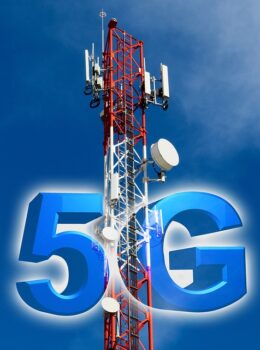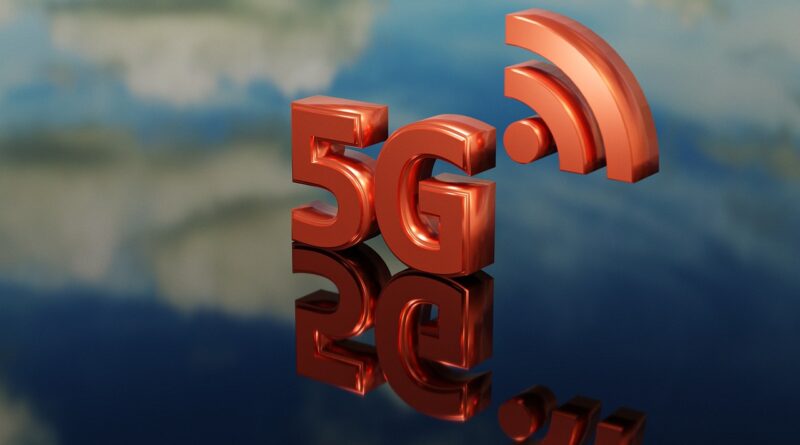The Impact of 5G on Everyday Life
The Impact of 5G on Everyday Life. The arrival of 5G, the fifth generation of wireless technology, is poised to revolutionize how we live, work, and interact with the digital world. With speeds up to 100 times faster than 4G, lower latency, and the ability to connect a vast number of devices simultaneously, 5G offers transformative potential. In this analysis, we explore how 5G impacts everyday life across various sectors, including communication, healthcare, transportation, entertainment, smart cities, and more.
1. Communication and Connectivity
5G dramatically improves the speed and quality of communication. With download speeds expected to reach up to 10 Gbps, video calls, file transfers, and cloud-based collaboration become instantaneous. The reduction in latency (or lag time) from around 50 milliseconds in 4G to under 1 millisecond in 5G means more seamless, real-time interactions.
- Work and Remote Collaboration: The COVID-19 pandemic accelerated the shift to remote work, and 5G enhances this trend by making cloud-based applications and virtual meetings faster and more reliable. Teams can collaborate on large files in real-time without interruptions.
- Personal Communication: High-quality video chats and real-time gaming experiences become more accessible, especially in areas where 4G connections previously struggled with bandwidth.
2. Healthcare Transformation
One of the most significant societal benefits of 5G lies in its potential to revolutionize health care. Impact of 5G on Everyday Life. the technology allows for quicker, more precise medical interventions and better patient outcomes.
- Telemedicine: Telehealth services, which boomed during the pandemic, will benefit from 5G by enabling high-definition video consultations and remote diagnostics, even in rural or underserved areas.
- Remote Surgery: With extremely low latency, 5G can support remote surgery by enabling surgeons to operate on patients using robotic instruments controlled in real-time from a different location. This has the potential to democratize access to specialized medical care.
- Wearable Technology and IoT: 5G supports the growth of connected healthcare devices like smartwatches and biosensors, allowing for continuous health monitoring and data collection. These devices can provide early warnings for health issues like heart problems, diabetes, and more, allowing for preemptive treatment.
3. Transportation and Autonomous Vehicles
5G will play a crucial role in the development and adoption of autonomous vehicles. The technology’s ultra-reliable, low-latency communications allow self-driving cars to process vast amounts of data in real-time.
- Vehicle-to-Everything (V2X) Communication: 5G enables vehicles to communicate with each other, with infrastructure (like traffic lights), and with pedestrians. This could significantly reduce traffic accidents, improve traffic flow, and make roads safer overall.
- Improved Navigation and Traffic Management: The increased bandwidth allows for more sophisticated navigation systems that can handle real-time data inputs from multiple sources, including satellites, other vehicles, and city infrastructure. This makes traffic management more efficient, reducing congestion and travel times.
4. Entertainment and Media
The entertainment industry is another area that stands to be profoundly transformed by 5G. Faster speeds and increased capacity mean more immersive experiences, better streaming quality, and the rise of entirely new forms of media.
- Streaming and Cloud Gaming: 5G enables higher-quality video streaming (up to 8K resolution) without buffering. It also makes cloud gaming a reality, where games are processed and rendered in the cloud rather than on the user’s device. This allows users to play high-definition games on any device without the need for expensive hardware.
- Virtual Reality (VR) and Augmented Reality (AR): 5G’s low latency and fast speeds make VR and AR much more feasible for everyday applications. In education, entertainment, and even workplace training, VR and AR experiences can now be streamed in real-time, opening up new opportunities for innovation.

5. Smart Cities and Infrastructure
5G is a key enabler of smart cities, where digital technologies are integrated into urban environments to improve the efficiency of services and enhance the quality of life for residents.
- Infrastructure Monitoring: Smart sensors placed on bridges, roads, and buildings can monitor structural health in real-time, reducing the risk of accidents due to infrastructure failure. For example, traffic lights can adjust their timing based on traffic flow, improving efficiency.
- Smart Grids: 5G allows energy grids to become more intelligent by enabling two-way communication between utilities and consumers. Smart grids can better manage electricity distribution, reduce wastage, and integrate renewable energy sources more effectively.
- Public Safety: Surveillance systems and emergency response mechanisms in smart cities can benefit from 5G by sending and receiving data instantaneously. This means quicker response times for emergencies and better overall public safety.
6. Industrial Automation and Manufacturing
5G will revolutionize Industry 4.0, where automation, machine learning, and the Internet of Things (IoT) are integrated into industrial processes.
- Smart Factories: 5G enables real-time data transmission between machines, allowing for greater automation and efficiency in factories. Robotics, AI-driven decision-making, and predictive maintenance can all benefit from the low-latency, high-speed communication offered by 5G.
- Supply Chain Management: The visibility of the supply chain improves with 5G-enabled IoT devices that track goods from production to delivery. This reduces delays, cuts costs, and makes logistics more efficient.
7. Education
In education, 5G enables new learning opportunities, particularly in terms of remote education and interactive, immersive learning environments.
- Remote Learning: The COVID-19 pandemic showed the importance of having a reliable internet connection for students attending online classes. 5G provides fast, reliable internet, allowing students in even the most remote areas to access educational resources.
- AR/VR in Classrooms: Augmented and virtual reality technologies can create immersive learning experiences, where students can, for instance, take virtual field trips to historical sites or interact with 3D models of scientific concepts. This brings a new level of engagement to education.
8. E-commerce and Retail
5G is poised to change the way people shop, both online and in physical stores, by offering faster connections, improved customer experiences, and enhanced business logistics.
- Seamless Shopping Experiences: Retailers can use 5G to offer personalized shopping experiences through virtual try-ons, AR-enhanced product displays, or AI-driven recommendations in real-time.
- Faster Payment Systems: With 5G, mobile payment systems and point-of-sale devices will become faster and more reliable. Retailers can handle larger volumes of transactions with less lag, improving customer satisfaction.
9. Environmental Impact
While 5G itself is an energy-intensive technology, its applications can lead to environmental benefits. For example, by optimizing transportation and energy grids, 5G can contribute to reducing carbon emissions.
- Reduced Energy Consumption in Cities: Smart grids, efficient transportation systems, and optimized industrial processes all contribute to reduced energy consumption, which could help combat climate change.
- Environmental Monitoring: 5G-enabled IoT devices can monitor environmental conditions, like air quality, water levels, and deforestation, providing crucial data for environmental conservation efforts.
Challenges and Considerations
While the benefits of 5G are numerous, there are also challenges associated with its widespread adoption:
- Infrastructure Costs: Building the necessary infrastructure for 5G is expensive, particularly in rural or underserved areas. The rollout has been slower in these regions, which could exacerbate the digital divide.
- Security Concerns: The more connected devices there are, the more opportunities for cyberattacks. With 5G facilitating the growth of the Internet of Things (IoT), cybersecurity will be an increasing concern for governments, businesses, and individuals alike.
- Health Concerns: Some groups have raised concerns about the potential health effects of 5G radiation. However, studies so far have found no conclusive evidence to suggest that 5G poses a significant health risk.
5G will have a profound impact on everyday life, reshaping industries and transforming how individuals interact with technology. From enhancing communication and healthcare to revolutionizing transportation and entertainment, the potential applications of 5G are vast.
As the technology continues to roll out globally, its full effects will become more apparent, ushering in an era of unprecedented connectivity and innovation.
The Impact of 5G on Everyday Life, For individuals and businesses alike, understanding and preparing for the changes brought by 5G will be key to staying competitive and making the most of the opportunities this groundbreaking technology offers.

